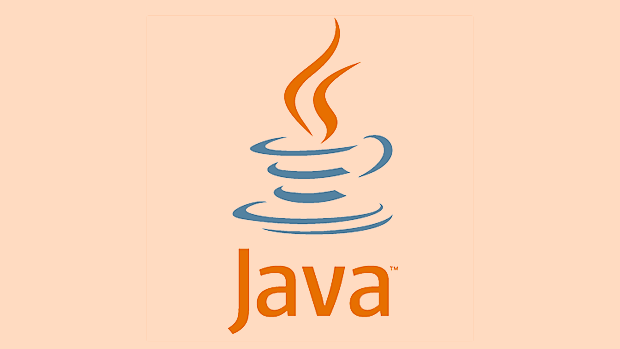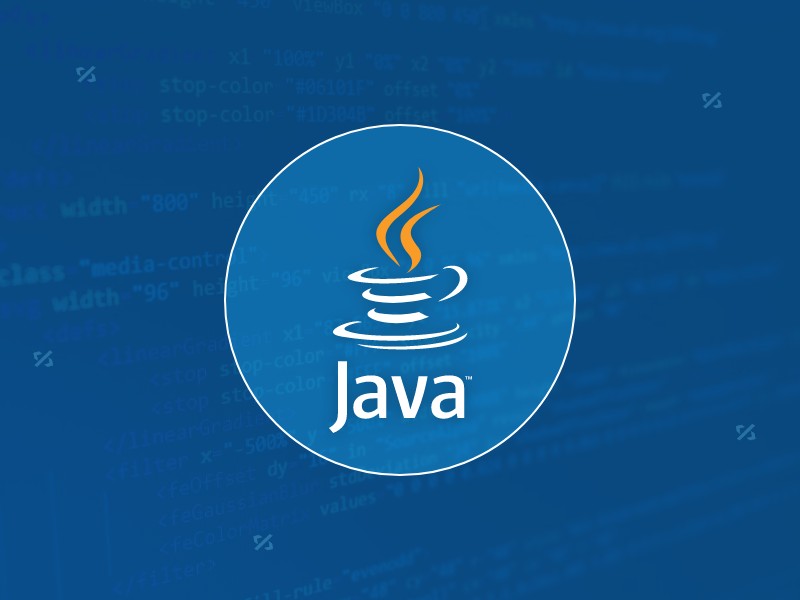Explain the Factory design pattern in Java.
Jul 17, 2025 am 02:58 AMThe Factory design pattern in Java is a creational design pattern that centralizes and abstracts object creation logic, reducing tight coupling between classes. 1) It allows objects to be created without exposing the instantiation logic to the client code. 2) It is useful when the exact type of object isn't known until runtime or when multiple similar object types exist. 3) Implementation involves defining an interface, creating concrete classes, and building a factory class that returns the appropriate instance based on input. 4) Variations include using static methods, maps for dynamic registration, and integration with dependency injection. 5) Best practices suggest keeping factories focused, using enums over strings, and managing dependencies properly.

When you're trying to create objects in Java without tightly coupling your code to specific classes, the Factory design pattern comes into play as a clean and flexible solution. It helps centralize object creation logic, making your application easier to maintain and extend.

What is the Factory Design Pattern?
The Factory design pattern is a creational pattern used to create objects without exposing the instantiation logic to the client. Instead of using new directly in your code, you delegate the responsibility of object creation to a factory class. This makes it easier to change or add new types later without modifying existing code that uses those objects.

For example, imagine you're building an app that works with different types of payment methods — like CreditCard, PayPal, or Bitcoin. Instead of scattering new CreditCardPayment() throughout your code, you can use a PaymentFactory to handle which object gets created based on input.
When Should You Use the Factory Pattern?
You'll find the Factory pattern useful when:

- Your code needs to work with subclasses, and the exact type isn't known until runtime.
- You want to hide implementation details of object creation from the caller.
- You have multiple similar object types and want to avoid cluttering your code with conditional statements for each one.
This often shows up in scenarios like plugin systems, configuration-based object creation, or when working with different implementations of an interface.
How to Implement a Simple Factory in Java
Here's a basic structure to get started:
- Define an interface or abstract class for your objects.
- Create concrete classes that implement this interface.
- Build a factory class that takes some input (like a string or enum) and returns the appropriate instance.
Example:
public interface Payment {
void pay(double amount);
}
public class CreditCardPayment implements Payment {
public void pay(double amount) {
System.out.println("Paid $" amount " via Credit Card.");
}
}
public class PayPalPayment implements Payment {
public void pay(double amount) {
System.out.println("Paid $" amount " via PayPal.");
}
}Then the factory:
public class PaymentFactory {
public Payment createPayment(String method) {
if ("creditcard".equals(method)) {
return new CreditCardPayment();
} else if ("paypal".equals(method)) {
return new PayPalPayment();
}
throw new IllegalArgumentException("Unknown payment method: " method);
}
}And usage becomes:
PaymentFactory factory = new PaymentFactory();
Payment payment = factory.createPayment("paypal");
payment.pay(50.0);This keeps the rest of your code unaware of which actual class it's using — only that it implements Payment.
Variations and Best Practices
Sometimes you might see more advanced variations, such as:
- Static factory methods instead of a separate factory class.
- Using maps to register types dynamically, especially in larger applications.
- Combining with dependency injection frameworks that already support factory-style object creation.
A few tips:
- Avoid putting too much logic inside the factory — keep it focused on object creation.
- Consider using enums instead of strings for better safety and readability.
- If your object creation requires dependencies (like configuration or services), make sure the factory has access to them — either through constructor injection or method parameters.
That’s basically how the Factory pattern works in Java. It’s not complicated, but it adds a layer of flexibility that pays off in medium-to-large projects.
The above is the detailed content of Explain the Factory design pattern in Java.. For more information, please follow other related articles on the PHP Chinese website!

Hot AI Tools

Undress AI Tool
Undress images for free

Undresser.AI Undress
AI-powered app for creating realistic nude photos

AI Clothes Remover
Online AI tool for removing clothes from photos.

Clothoff.io
AI clothes remover

Video Face Swap
Swap faces in any video effortlessly with our completely free AI face swap tool!

Hot Article

Hot Tools

Notepad++7.3.1
Easy-to-use and free code editor

SublimeText3 Chinese version
Chinese version, very easy to use

Zend Studio 13.0.1
Powerful PHP integrated development environment

Dreamweaver CS6
Visual web development tools

SublimeText3 Mac version
God-level code editing software (SublimeText3)

Hot Topics
 VSCode settings.json location
Aug 01, 2025 am 06:12 AM
VSCode settings.json location
Aug 01, 2025 am 06:12 AM
The settings.json file is located in the user-level or workspace-level path and is used to customize VSCode settings. 1. User-level path: Windows is C:\Users\\AppData\Roaming\Code\User\settings.json, macOS is /Users//Library/ApplicationSupport/Code/User/settings.json, Linux is /home//.config/Code/User/settings.json; 2. Workspace-level path: .vscode/settings in the project root directory
 Full-Stack Web Development with Java, Spring Boot, and React
Jul 31, 2025 am 03:33 AM
Full-Stack Web Development with Java, Spring Boot, and React
Jul 31, 2025 am 03:33 AM
Selecting the Java SpringBoot React technology stack can build stable and efficient full-stack web applications, suitable for small and medium-sized to large enterprise-level systems. 2. The backend uses SpringBoot to quickly build RESTfulAPI. The core components include SpringWeb, SpringDataJPA, SpringSecurity, Lombok and Swagger. The front-end separation is achieved through @RestController returning JSON data. 3. The front-end uses React (in conjunction with Vite or CreateReactApp) to develop a responsive interface, uses Axios to call the back-end API, and ReactRouter
 How to handle transactions in Java with JDBC?
Aug 02, 2025 pm 12:29 PM
How to handle transactions in Java with JDBC?
Aug 02, 2025 pm 12:29 PM
To correctly handle JDBC transactions, you must first turn off the automatic commit mode, then perform multiple operations, and finally commit or rollback according to the results; 1. Call conn.setAutoCommit(false) to start the transaction; 2. Execute multiple SQL operations, such as INSERT and UPDATE; 3. Call conn.commit() if all operations are successful, and call conn.rollback() if an exception occurs to ensure data consistency; at the same time, try-with-resources should be used to manage resources, properly handle exceptions and close connections to avoid connection leakage; in addition, it is recommended to use connection pools and set save points to achieve partial rollback, and keep transactions as short as possible to improve performance.
 Java Performance Optimization and Profiling Techniques
Jul 31, 2025 am 03:58 AM
Java Performance Optimization and Profiling Techniques
Jul 31, 2025 am 03:58 AM
Use performance analysis tools to locate bottlenecks, use VisualVM or JProfiler in the development and testing stage, and give priority to Async-Profiler in the production environment; 2. Reduce object creation, reuse objects, use StringBuilder to replace string splicing, and select appropriate GC strategies; 3. Optimize collection usage, select and preset initial capacity according to the scene; 4. Optimize concurrency, use concurrent collections, reduce lock granularity, and set thread pool reasonably; 5. Tune JVM parameters, set reasonable heap size and low-latency garbage collector and enable GC logs; 6. Avoid reflection at the code level, replace wrapper classes with basic types, delay initialization, and use final and static; 7. Continuous performance testing and monitoring, combined with JMH
 python itertools combinations example
Jul 31, 2025 am 09:53 AM
python itertools combinations example
Jul 31, 2025 am 09:53 AM
itertools.combinations is used to generate all non-repetitive combinations (order irrelevant) that selects a specified number of elements from the iterable object. Its usage includes: 1. Select 2 element combinations from the list, such as ('A','B'), ('A','C'), etc., to avoid repeated order; 2. Take 3 character combinations of strings, such as "abc" and "abd", which are suitable for subsequence generation; 3. Find the combinations where the sum of two numbers is equal to the target value, such as 1 5=6, simplify the double loop logic; the difference between combinations and arrangement lies in whether the order is important, combinations regard AB and BA as the same, while permutations are regarded as different;
 Mastering Dependency Injection in Java with Spring and Guice
Aug 01, 2025 am 05:53 AM
Mastering Dependency Injection in Java with Spring and Guice
Aug 01, 2025 am 05:53 AM
DependencyInjection(DI)isadesignpatternwhereobjectsreceivedependenciesexternally,promotingloosecouplingandeasiertestingthroughconstructor,setter,orfieldinjection.2.SpringFrameworkusesannotationslike@Component,@Service,and@AutowiredwithJava-basedconfi
 python pytest fixture example
Jul 31, 2025 am 09:35 AM
python pytest fixture example
Jul 31, 2025 am 09:35 AM
fixture is a function used to provide preset environment or data for tests. 1. Use the @pytest.fixture decorator to define fixture; 2. Inject fixture in parameter form in the test function; 3. Execute setup before yield, and then teardown; 4. Control scope through scope parameters, such as function, module, etc.; 5. Place the shared fixture in conftest.py to achieve cross-file sharing, thereby improving the maintainability and reusability of tests.
 A Guide to Java Flight Recorder (JFR) and Mission Control
Jul 31, 2025 am 04:42 AM
A Guide to Java Flight Recorder (JFR) and Mission Control
Jul 31, 2025 am 04:42 AM
JavaFlightRecorder(JFR)andJavaMissionControl(JMC)providedeep,low-overheadinsightsintoJavaapplicationperformance.1.JFRcollectsruntimedatalikeGCbehavior,threadactivity,CPUusage,andcustomeventswithlessthan2%overhead,writingittoa.jfrfile.2.EnableJFRatsta






